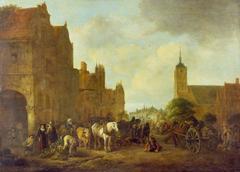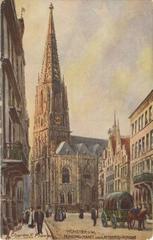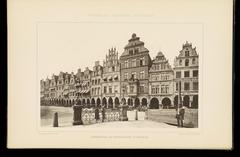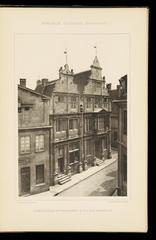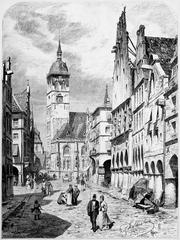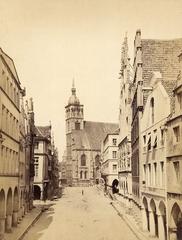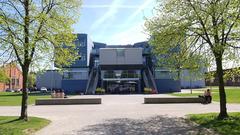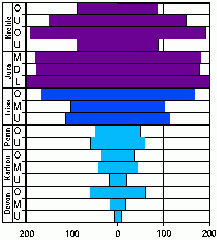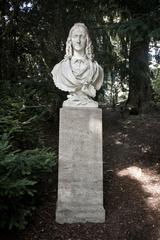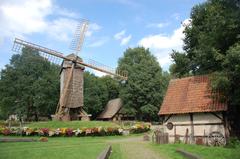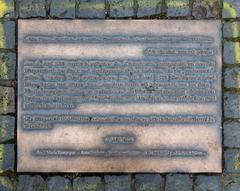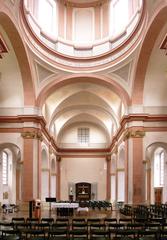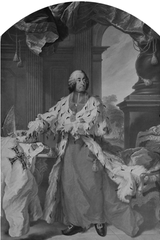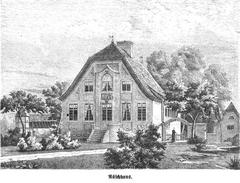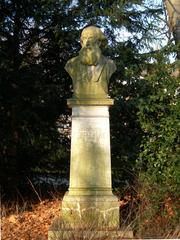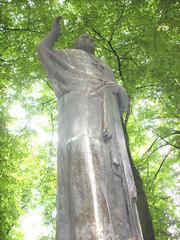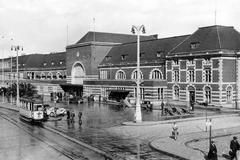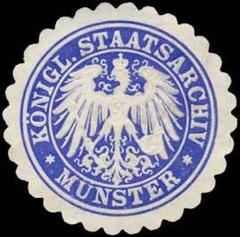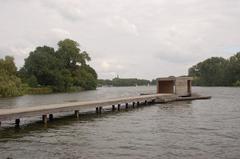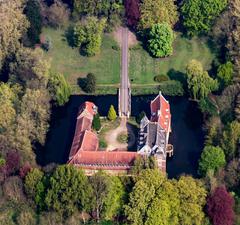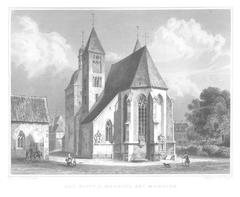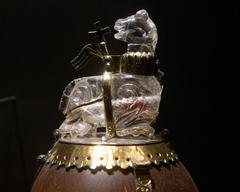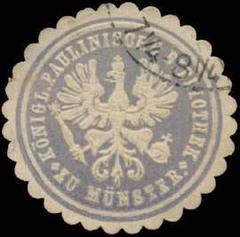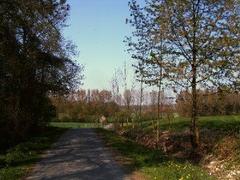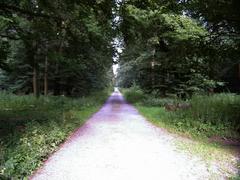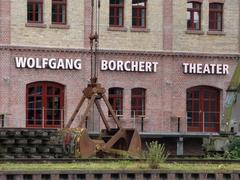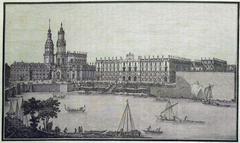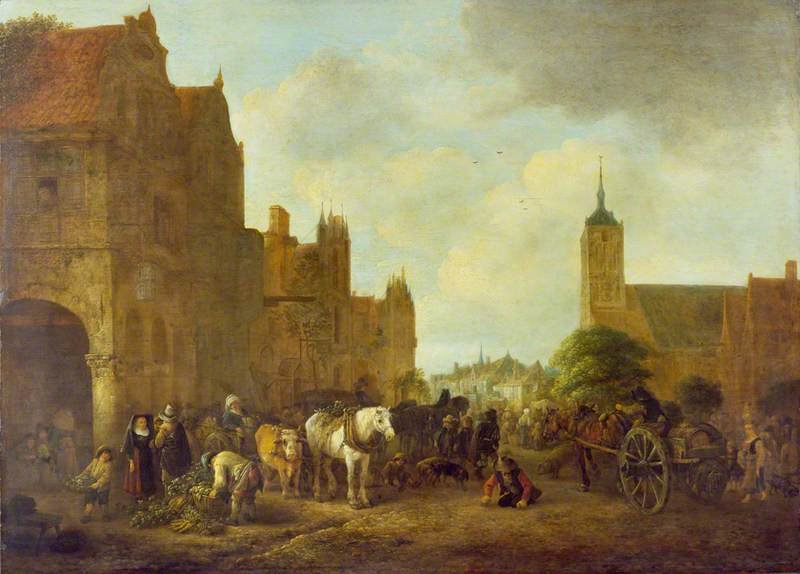
Visiting Prinzipalmarkt in Münster: History, Tips, and More
Date: 23/07/2024
Introduction
Prinzipalmarkt, situated in the heart of Münster, Germany, is a historic marketplace that stands as a testament to the city’s rich history and architectural splendor. Dating back to the 12th century, Prinzipalmarkt has evolved from a medieval trade hub to a vibrant cultural and commercial center, reflecting the various historical epochs it has witnessed. The marketplace’s strategic location near significant landmarks such as St. Lambert’s Church and the Town Hall underscores its importance in Münster’s economic and social fabric (Münster Marketing). Over the centuries, Prinzipalmarkt’s architectural style has transitioned from Romanesque to Gothic and Baroque, each adding layers of historical and artistic significance (Architekturführer Münster). Today, Prinzipalmarkt is not just a relic of the past but a living monument that continues to thrive with bustling shops, cafes, and cultural events, making it a must-visit destination for history buffs, architecture enthusiasts, and curious travelers alike.
Table of Contents
- Introduction
- Medieval Origins
- Architectural Evolution
- The Hanseatic League Influence
- The Reformation and Religious Turmoil
- The Baroque Period
- The Impact of World War II
- Modern-Day Significance
- Visitor Information
- Special Events and Guided Tours
- Photographic Spots
- Preservation Efforts
- FAQ
- Conclusion
Discover the Rich History and Cultural Significance of Prinzipalmarkt in Münster
Medieval Origins
Prinzipalmarkt, the historic marketplace in Münster, Germany, dates back to the medieval period. The origins of this iconic street can be traced to the 12th century when Münster was emerging as a significant trade hub in the region. The layout of Prinzipalmarkt was designed to facilitate commerce, with its arcaded buildings providing shelter for merchants and their goods. The street’s strategic location near St. Lambert’s Church and the Town Hall underscored its importance in the city’s economic and social life (Münster Marketing).
Architectural Evolution
The architectural style of Prinzipalmarkt has evolved significantly over the centuries. Initially, the buildings were constructed in the Romanesque style, characterized by semi-circular arches and robust structures. However, as Münster grew in wealth and influence, the architectural style transitioned to Gothic in the 13th and 14th centuries. This period saw the introduction of pointed arches, ribbed vaults, and flying buttresses, which added a sense of verticality and grandeur to the buildings (Architekturführer Münster).
The Hanseatic League Influence
In the late Middle Ages, Münster became a member of the Hanseatic League, a powerful economic and defensive alliance of merchant guilds and market towns in Northwestern and Central Europe. This affiliation brought significant prosperity to Prinzipalmarkt, as it became a bustling center for trade in goods such as textiles, salt, and grain. The wealth generated during this period is reflected in the elaborate facades and ornate gables of the buildings lining the street (Hanseatic League).
The Reformation and Religious Turmoil
The 16th century was a period of religious upheaval in Münster, significantly impacting Prinzipalmarkt. The city became a focal point of the Anabaptist movement, which led to the establishment of the radical Anabaptist “Kingdom of Münster” in 1534. During this time, Prinzipalmarkt witnessed significant violence and destruction as the Anabaptists sought to impose their religious beliefs. The eventual defeat of the Anabaptists by the Prince-Bishop’s forces in 1535 led to the restoration and rebuilding of the area (Münster History).
The Baroque Period
The 17th century brought the Baroque architectural style to Prinzipalmarkt, characterized by dramatic expressions, grandeur, and detailed ornamentation. This period saw the construction of several notable buildings, including the Erbdrostenhof, a grand palace built for the Droste zu Vischering family. The influence of the Baroque style added a new layer of architectural diversity to Prinzipalmarkt, blending seamlessly with the existing Gothic structures (Baroque Architecture).
The Impact of World War II
World War II had a devastating impact on Prinzipalmarkt. The Allied bombing raids in 1943 and 1944 resulted in extensive damage to the historic buildings. However, the post-war period saw a remarkable effort to restore Prinzipalmarkt to its former glory. The reconstruction was carried out with meticulous attention to historical accuracy, using original plans and photographs to recreate the facades and arcades. This restoration effort has been praised for preserving the historical integrity of the area while allowing it to function as a modern commercial center (WWII Impact).
Modern-Day Significance
Today, Prinzipalmarkt stands as a testament to Münster’s rich history and resilience. It continues to be a vibrant commercial and cultural hub, attracting tourists and locals alike. The street is home to a mix of high-end boutiques, traditional shops, cafes, and restaurants, all housed within the historic arcaded buildings. Prinzipalmarkt also hosts various cultural events and festivals throughout the year, further cementing its role as the heart of Münster’s social life (Münster Tourism).
Visitor Information
For those planning to visit Prinzipalmarkt, here are some essential details:
- Visiting Hours: Prinzipalmarkt is accessible 24/7, but individual shops and cafes have their own operating hours, typically from 10 AM to 8 PM.
- Tickets: There is no entry fee to walk around Prinzipalmarkt, but guided tours may have a cost. Check local tour providers for prices.
- Travel Tips: The marketplace is easily accessible by public transport, with several bus and tram stops nearby. Parking is available but can be limited, so public transport is recommended.
- Nearby Attractions: In addition to Prinzipalmarkt, visitors can explore nearby attractions like St. Lambert’s Church, the Town Hall, and the Erbdrostenhof.
- Accessibility: Prinzipalmarkt is generally accessible to visitors with mobility issues, though some cobblestone areas may pose challenges.
Special Events and Guided Tours
Prinzipalmarkt is not only a historic site but also a venue for numerous cultural events and festivals throughout the year. From Christmas markets to summer festivals, there is always something happening. For a deeper understanding of its history, several guided tours are available, providing insights into the architectural styles, historical events, and notable figures associated with the area (Münster Guided Tours).
Photographic Spots
Prinzipalmarkt offers numerous picturesque spots perfect for photography. The arcaded buildings, ornate gables, and historic facades provide a stunning backdrop for memorable photos. Key spots include the Town Hall, St. Lambert’s Church, and the Erbdrostenhof.
Preservation Efforts
The preservation of Prinzipalmarkt is a continuous effort involving local authorities, historians, and conservationists. The buildings are regularly maintained to ensure their structural integrity and historical authenticity. Modern interventions are carefully managed to blend with the historic fabric of the area, ensuring that Prinzipalmarkt remains a living monument to Münster’s past (Conservation Efforts).
FAQ
- What are the visiting hours for Prinzipalmarkt? Prinzipalmarkt is accessible 24/7, but individual shops and cafes have their own operating hours.
- Are there guided tours available at Prinzipalmarkt? Yes, several guided tours are available, offering insights into the area’s history and architecture.
- Is there an entry fee to visit Prinzipalmarkt? No, there is no entry fee to walk around Prinzipalmarkt, but guided tours may cost extra.
- What are some nearby attractions? Nearby attractions include St. Lambert’s Church, the Town Hall, and the Erbdrostenhof.
Conclusion
Prinzipalmarkt’s journey from a medieval marketplace to a modern-day cultural and commercial hub encapsulates the resilience and rich heritage of Münster. Despite the devastation of World War II, the meticulous reconstruction efforts have ensured that Prinzipalmarkt retains its historical integrity while adapting to contemporary needs (WWII Impact). The marketplace’s blend of architectural styles, from Gothic to Baroque, along with its vibrant cultural events and bustling commercial activities, make it an enduring symbol of Münster’s dynamic history (Münster Tourism). Whether you’re exploring the ornate facades, enjoying a meal at a local café, or participating in one of the many festivals, Prinzipalmarkt offers a unique glimpse into the past while celebrating the present. For a comprehensive experience, visitors are encouraged to join guided tours that provide deeper insights into the area’s history and significance (Münster Guided Tours). Plan your visit to Prinzipalmarkt to immerse yourself in the rich tapestry of Münster’s cultural and historical heritage.
